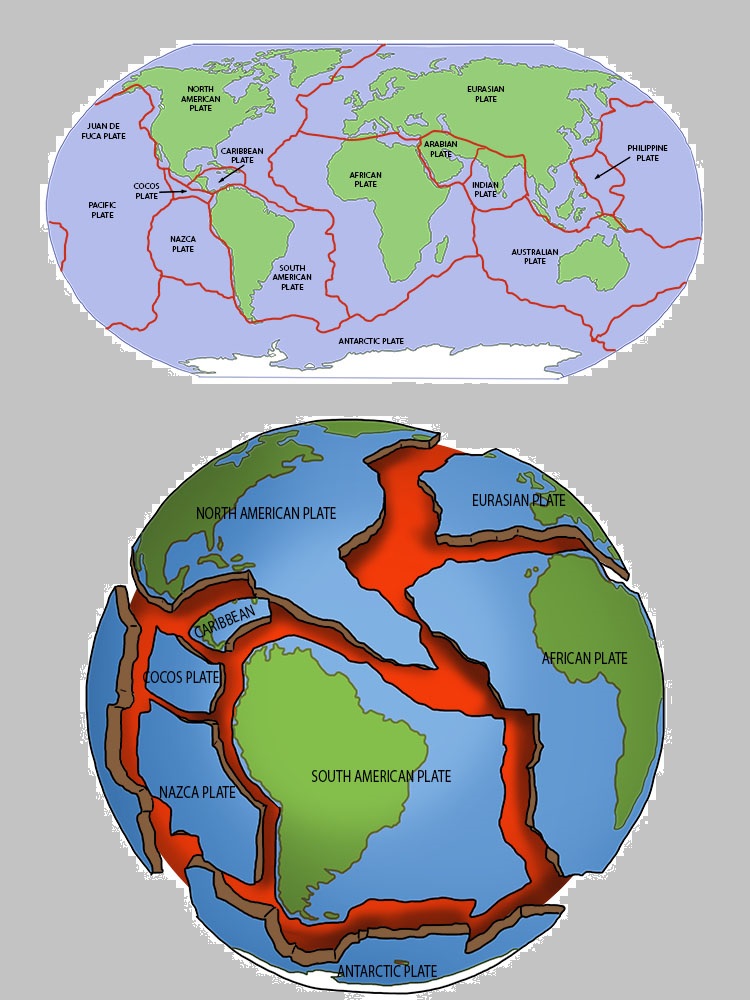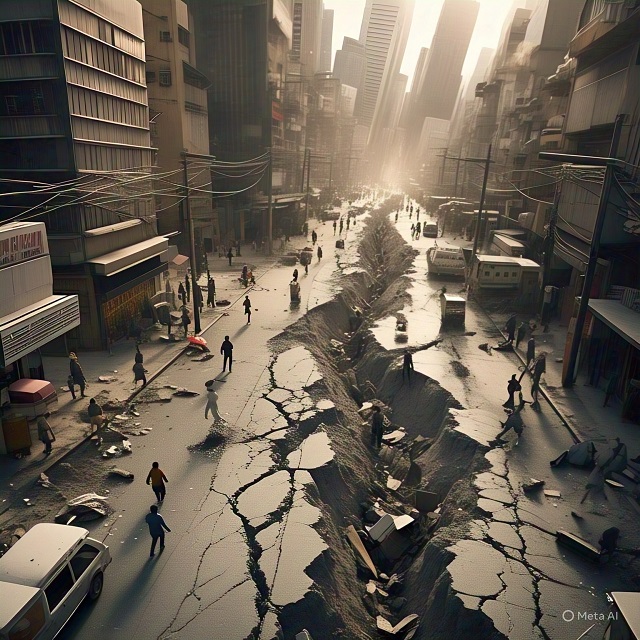Earthquakes are sudden, shaking movements of the ground that can range from barely noticeable to devastatingly powerful. But what causes earthquakes? This question has fascinated scientists and terrified civilizations for centuries. Earthquakes are not just random acts of nature—they are the result of powerful forces beneath the Earth’s surface.
We’ll break down what causes earthquakes, the science behind them, their types, the most affected regions, and how humans may even contribute to them. Whether you’re a student, a curious learner, or someone living in an earthquake-prone area, this guide will give you a clear understanding of earthquakes in a simple and relatable way.
Table of Contents
The Earth’s Structure – The Foundation of Earthquakes
To understand what causes earthquakes, we need to start by examining the Earth’s structure. The Earth is made up of four main layers:
- Crust – The thin, rigid outermost layer where we live.
- Mantle – A much thicker layer beneath the crust composed of hot, semi-solid rock.
- Outer Core – A liquid layer composed mostly of molten metals.
- Inner Core – A dense, solid core made primarily of iron and nickel.

The Earth’s crust is not a continuous shell; instead, it’s broken into massive slabs called tectonic plates. These plates float atop the semi-fluid mantle and are in constant motion, although at an extremely slow pace—just a few centimeters each year.
Now that we understand the basics, let’s dive deeper into what causes earthquakes.
What Causes Earthquakes? The Real Reasons Behind the Shakes
At its core, what causes earthquakes is the sudden release of energy in the Earth’s crust due to stress and movement between tectonic plates. Here are the major reasons:
1. Tectonic Plate Movements – The Primary Cause
Most earthquakes are the result of tectonic plate interactions. These giant plates move relative to each other, but their edges often get stuck because of friction. When the built-up stress overcomes the friction, the plates suddenly move, releasing energy in the form of seismic waves—this is what we feel as an earthquake.

There are three types of boundaries where earthquakes are common:
- Convergent Boundaries – Plates collide. One may slide beneath the other, forming subduction zones.
- Divergent Boundaries – Plates move apart, creating gaps and rift zones.
- Transform Boundaries – Plates slide horizontally past each other, like the well-known San Andreas Fault.
All of these scenarios contribute to what causes earthquakes on a global scale.
2. Volcanic Activity
Another significant factor in what causes earthquakes is volcanic activity. When magma rises toward the surface, it can crack surrounding rock formations. This pressure and movement often trigger volcanic earthquakes, which are common near active volcanoes. While generally less powerful than tectonic quakes, they can still cause serious local damage.
3. Human-Induced Earthquakes
Surprisingly, humans can also play a role in what causes earthquakes. Certain activities—like mining, oil drilling, fracking (hydraulic fracturing), and even the filling of large dams—can disturb the stress balance within the Earth’s crust.
For example, injecting high-pressure fluids underground can lubricate faults and lead to a sudden slip. These are called induced earthquakes, and their frequency has increased in places with significant underground industrial activity.
How Are Earthquakes Measured?
To analyze what causes earthquakes, scientists need accurate measurements. Earthquakes are detected using seismographs, which record the vibrations and movement of the ground.
Earthquake strength is measured in two key ways:
- Magnitude – The total energy released. The Moment Magnitude Scale (Mw) is now the standard, replacing the older Richter Scale.
- Intensity – How much shaking is felt by people and how much damage is done, typically measured by the Modified Mercalli Intensity Scale.
Magnitude gives a number (e.g., 5.8 or 7.2), while intensity describes the actual impact.
Where Do Earthquakes Happen Most?
Earthquakes are more likely to occur along active fault lines and tectonic boundaries. Some of the most earthquake-prone areas in the world include:
- The Pacific Ring of Fire – A region circling the Pacific Ocean, home to 90% of the world’s earthquakes.
- California, USA – Home to the San Andreas Fault.
- Japan – At the junction of multiple tectonic plates.
- Indonesia – Located on the highly active Sunda Plate.
- Turkey and Iran – Areas with regular seismic activity due to converging plates.
- Nepal and the Himalayas – Formed due to the ongoing collision of the Indian and Eurasian plates.
Understanding what causes earthquakes helps us identify and prepare for regions at higher risk.
Can Earthquakes Be Predicted?
One of the most challenging questions is whether we can predict what causes earthquakes in real time. Unfortunately, earthquake prediction is not yet possible with current science. While scientists can assess long-term risk zones and likelihood based on past activity, predicting the exact time and place of an earthquake is still beyond our reach.
However, early warning systems are being developed in many countries. These systems detect the first (P) waves of an earthquake and send alerts seconds before the more damaging (S) waves hit. While the warning may be brief, it can provide enough time to take cover or halt sensitive operations.
The Aftermath – What Happens After an Earthquake?
Understanding what causes earthquakes is just the beginning. After an initial quake, aftershocks often follow. These smaller tremors can occur minutes, hours, or even days later and may cause additional damage.

Moreover, earthquakes can lead to secondary disasters like:
- Tsunamis – When underwater earthquakes displace large volumes of water.
- Landslides – In hilly or mountainous regions.
- Fires – Caused by ruptured gas lines or electrical damage.
How to Stay Safe During an Earthquake
Knowing what causes earthquakes also helps in disaster preparedness. Here are some safety tips:
- Drop, Cover, and Hold On – Get under sturdy furniture and protect your head.
- Stay away from windows and heavy objects that might fall.
- If outdoors, move to an open area away from buildings and trees.
- After the shaking stops, check for injuries and hazards like gas leaks.
Preparedness saves lives.
Conclusion
So, what causes earthquakes? The answer lies deep beneath our feet. Earthquakes are mainly caused by the shifting and breaking of the Earth’s tectonic plates. Sometimes, they’re triggered by volcanic activity or even human actions. While we can’t stop or predict them yet, understanding the science behind what causes earthquakes helps us stay aware, prepare better, and minimize damage when nature unleashes its power.
Earthquakes remind us that our planet is alive, constantly changing, and that we must always respect its might. The more we learn about what causes earthquakes, the better equipped we’ll be to coexist with this powerful natural force.
Do you want to read more about science? Check this out: 1] What is gravity 2] What is Electricity? 3] Easy Science Experiments for Kids
